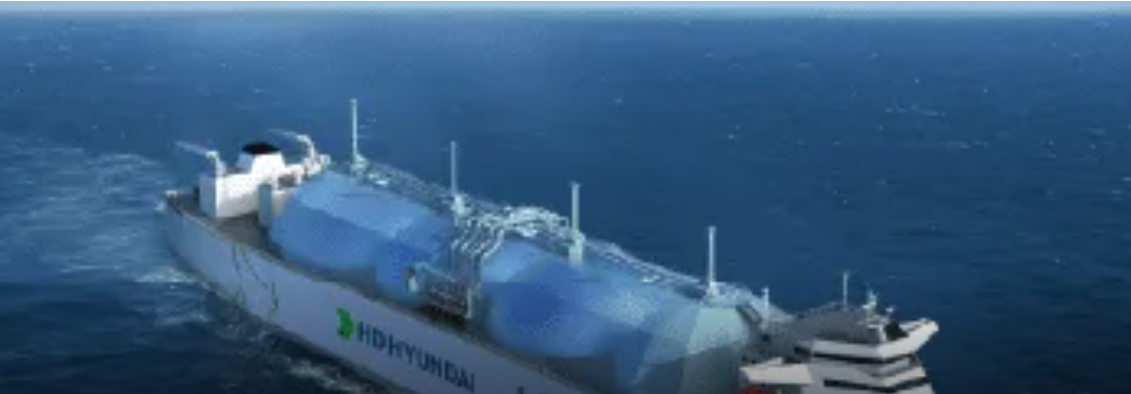 DNV has granted Approval in Principle (AIP) to HD Korea Shipbuilding & Offshore Engineering (HD KSOE) and its affiliates, HD Hyundai Heavy Industry (HD HHI) and Hyundai Mipo Dockyard (HMD), for their cutting-edge hydrogen system.
DNV has granted Approval in Principle (AIP) to HD Korea Shipbuilding & Offshore Engineering (HD KSOE) and its affiliates, HD Hyundai Heavy Industry (HD HHI) and Hyundai Mipo Dockyard (HMD), for their cutting-edge hydrogen system.This technology breakthrough aims to facilitate large-capacity hydrogen transportation and storage by 2030, marking a significant stride in the global energy transition toward zero and low-carbon hydrogen.
Challenges in Hydrogen Transport by Ship
Sustainably produced hydrogen is increasingly recognized as a linchpin in the world’s shift toward cleaner energy sources. However, the efficient and large-scale transport of hydrogen by ship presents intricate challenges. Unlike liquefied natural gas (LNG), which operates at minus 153 degrees Celsius, hydrogen needs to be stored and transported at an ultra-chilled temperature of minus 253 degrees Celsius. The complexity of managing such extreme conditions has been a bottleneck in harnessing hydrogen’s potential for decarbonizing heavyweight industries, including steel and cement production.
HD KSOE’s groundbreaking system leverages boil-off gas from hydrogen transport to power a hybrid propulsion system, seamlessly integrating hydrogen dual-fuel (DF) engines and fuel cells. This ingenious approach not only addresses the technical complexities of handling ultra-cold hydrogen but also aligns with the broader goal of sustainable hydrogen utilization.
Collaborating on a global scale, HD KSOE is working closely with strategic partners like Woodside Energy and Linde Engineering to explore and commercialize innovative hydrogen transportation and storage solutions. Their shared ambition is to bring these technological advancements to the market by 2030.
Dr. Sungjun Kim, Chief Technology Officer at HD KSOE, emphasized the company’s commitment to pioneering sustainable technologies. He stated, “We are continuously developing world-class technology in liquefied hydrogen following our achievements in methanol, ammonia, and CO2 carriers. With our hydrogen system, we will lead technology advances in transitioning to a carbon-neutral society.”
DNV’s Role in Advancing Hydrogen Transport
Vidar Dolonen, DNV Regional Manager for Korea & Japan, underscored the importance of collaborative efforts in tackling the challenges of hydrogen transport for shipping. He emphasized the need to draw upon the expertise of diverse partners, build on knowledge gleaned from other fuel sectors, and adapt technologies to the maritime environment. DNV is committed to fostering such partnerships and setting new design standards to propel the development of the next generation of hydrogen carriers.
Maria Gonzalez-Perez, Vice President of Strategic Planning & Portfolio New Energy of Woodside Energy, noted the system’s potential to accelerate the growth of the hydrogen shipping value chain. She highlighted the critical roles of hydrogen producers, consumers, and shipyards in making hydrogen shipping a reality.
Lars Blum, the Managing Director of Linde Kryotechnik, expressed satisfaction in collaborating with HD KSOE to bridge existing gaps in the hydrogen value chain. By pooling the expertise of world-class companies, they aim to unlock the vast potential of hydrogen.
Samuel Zouaghi, CEO of Cryostar, highlighted their progressive work in developing equipment for hydrogen, both on land and at sea. Cryostar is dedicated to aligning its expertise with HD KSOE’s system, ensuring seamless integration with hydrogen vessels.